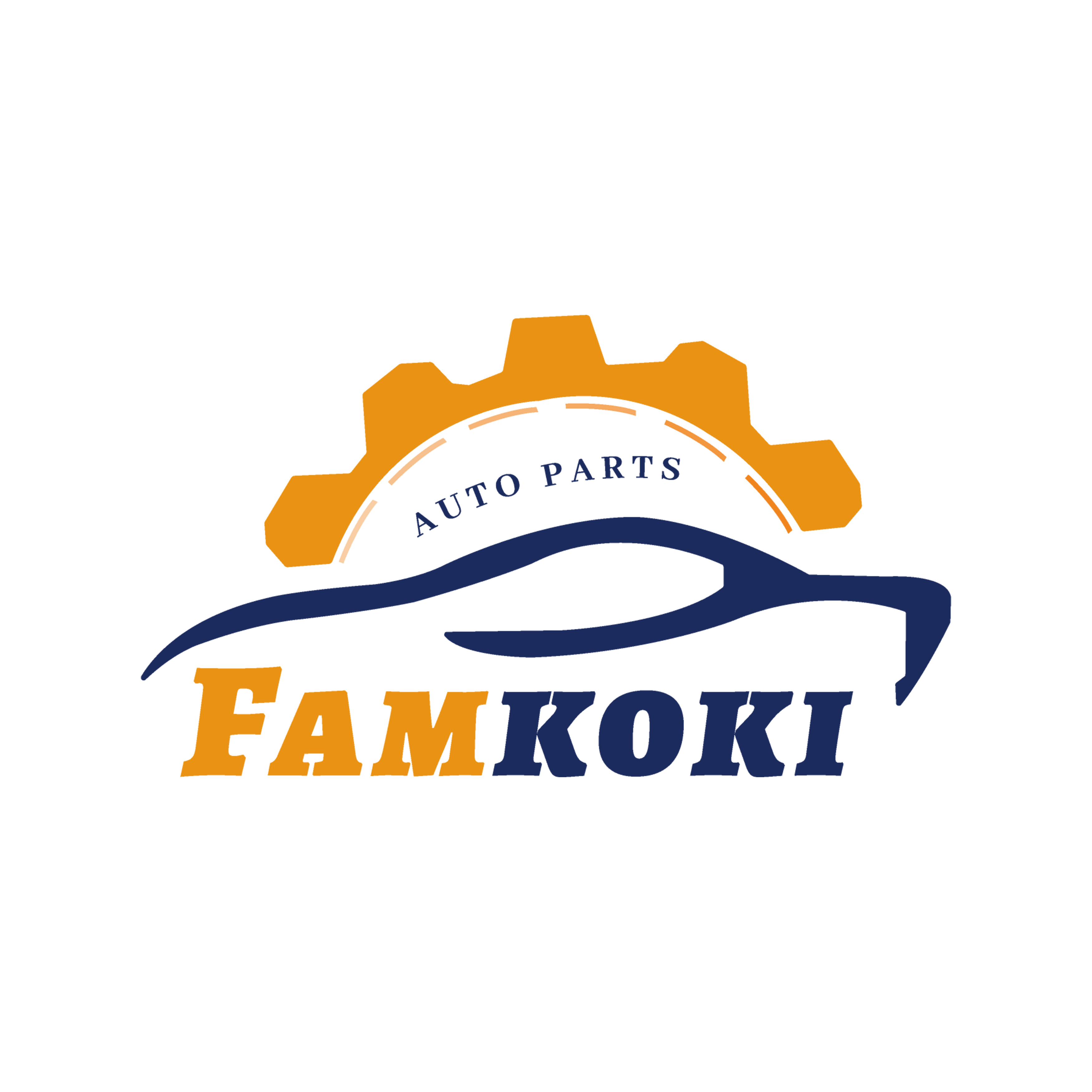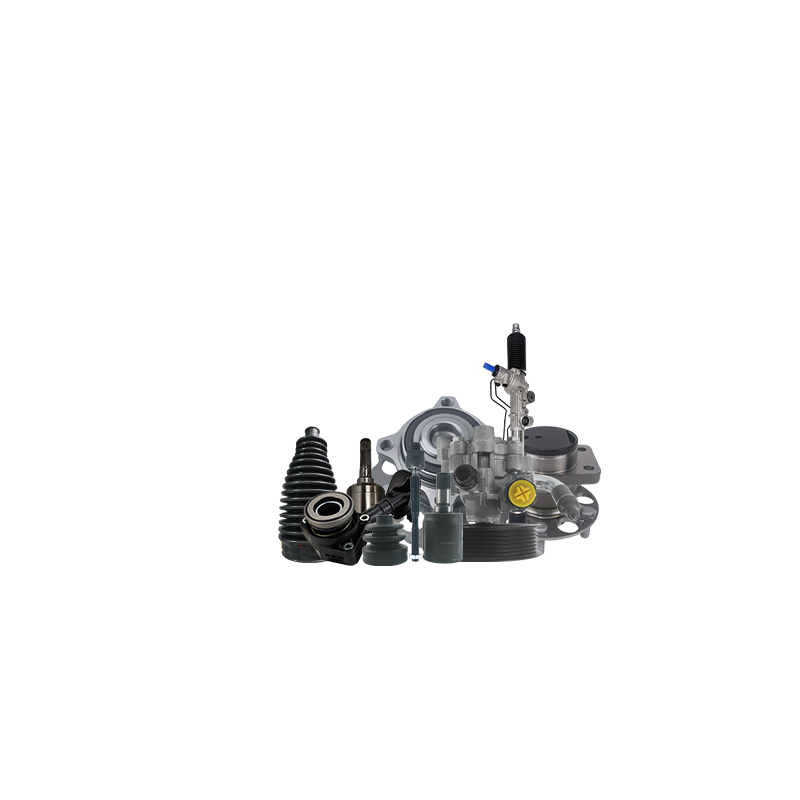تطور أفضل أعمدة التوجيه: من التصاميم الميكانيكية إلى التصاميم المركزية حول السائق
من الروابط الميكانيكية إلى الأنظمة الوحداتية والقابلة للتخصيص
بدأ مصنّعو السيارات بالابتعاد عن الروابط الميكانيكية الثابتة القديمة في الخمسينيات عندما قدّموا أعمدة التوجيه القابلة للطي. وفقًا لتقرير تطور عمود التوجيه، قللت هذه التصاميم الجديدة من إصابات التصادم بنسبة تقارب 41%. ثم جاءت الستينيات مع أعمدة تمددية تسمح للسائقين بتعديل عجلات القيادة رأسيًا، وهي ميزة كانت ثورية تمامًا في ذلك الوقت، ووضعت الأساس للوحات القياد القابلة للتخصيص اليوم. تحتوي أنظمة التوجيه الحديثة الآن على آليات فك سريعة وموصلات قياسية، ما يتيح لعشاق السيارات تبديل العجلات أو إضافة عناصر تحكم رقمية بسهولة دون التأثير على المتانة الهيكلية للمركبة. وقد تبنّت صناعة السيارات هذا النهج الوحداتي لأنه يمنح العملاء ما يريدونه: خيارات شخصية، مع الالتزام في الوقت نفسه بجميع متطلبات السلامة الصارمة التي يجب على المصنّعين اتباعها.
التطورات المريحة لتحسين الراحة والتحكم
أحدثت أعمدة القيادة التي يمكن أن تميل بين 15 و 30 درجة فرقا حقيقيا للسائقين، حيث خفضت التعب بنحو 27٪ على تلك المسافات الطويلة وفقاً لأبحاث بونيمون من عام 2022. هذه الأيام المصنعين يستخدمون أشياء مثل الألومنيوم المزورة و الألياف الكربونية المركبة التي تساعد على خفض الاهتزازات التي تمر عبر يدي السائق. و دعونا لا ننسى عن قبضات الرغوة الذاكرة والأسطح المُسخنة التي تحدث كل الفرق عندما تتقلب درجات الحرارة بشكلٍ هائل في الخارج. الأرقام تؤكد ذلك أيضاً - أظهر استطلاع حديث أجري في عام 2023 أن حوالي ثلاثة أرباع محبي الطرق الوعرة يضعون القيادة القابلة للتعديل في أعلى قائمة رغباتهم للحصول على تحكم أفضل عبر المسارات المضطربة. هذا بالتأكيد أثار الاهتمام بتلك الأنظمة الرائعة ذات المحور المتعدد الميل والوصول التي نراها تظهر في كل مكان الآن.
كيف يستخدم مصنعو المعدات الأولية تقنية التوجيه للتمييز بين العلامات التجارية
تُستخدم تصميمات عمود التوجيه بشكل متزايد من قبل مصنعي السيارات كوسيلة للتعبير عن شخصية العلامة التجارية. وغالبًا ما تُدرج شركات صناعة السيارات الفاخرة أنظمة تغذية راجعة لمسية (haptic feedback) لتوفير استجابة لمسية مرضية عند الدوران، في حين تبذل الشركات المتخصصة في السيارات الأداء عناية كبيرة لضمان استجابة نظام التوجيه خلال جزء من الثانية. كما نشهد حاليًا بعض الابتكارات الرائعة في عجلات القيادة القابلة للطي، خصوصًا في السيارات ذاتية القيادة وفقًا لتقرير صدر العام الماضي بعنوان دراسة عجلة القيادة القابلة للطي (Stowable Steering Study). ويجب أن تبدو هذه التصاميم مستقبلية الشكل مع اجتيازها جميع اختبارات السلامة التي تطلبها الجهات التنظيمية. ويشكّل النهج الكلي أهمية كبيرة في السوق المزدحمة اليوم. وتُظهر استطلاعات حديثة أن نحو ثلثي مشتري السيارات يربطون فعليًا بين شعور التوجيه وبين إدراكهم لجودة السيارة ككل، وفقًا لأبحاث شركة J.D. Power الصادرة هذا العام.
تحسين الأداء: أفضل أعمدة التوجيه للسيارات عالية الأداء وللاستخدام اليومي
ضبط استجابة وتغذية عجلة القيادة باستخدام أعمدة مخصصة
تتيح أحدث تصاميم عمود التوجيه للمصنّعين تعديل نسب التروس، وإعدادات التخميد، ومقدار الشعور بالطريق الذي يُعاد إلى يدي السائق. وعندما يدمج مصنعو السيارات هذه الأنظمة القابلة للتخصيص في المركبات، فإنهم يلاحظون عادةً انخفاضًا بنسبة حوالي 18 بالمئة في جهد التوجيه عند القيادة ببطء، مع الحفاظ في الوقت نفسه على ثبات كافٍ عند السرعات العالية وفقًا لبحث أجراه المعهد الدولي لهندسة المواصلات (SAE International) العام الماضي. وتُقدِّم معظم السيارات الحديثة حاليًا أوضاع قيادة مختلفة أيضًا. فيمكن للسائقين اختيار وضع الحلبة الذي يجعل التوجيه أكثر صلابة بنسبة 12% تقريبًا لتحقيق دقة أفضل في المنعطفات، أو التبديل إلى وضع المدينة الذي يزيل كل مقاومة من عجلة القيادة، ما يجعل الوقوف المتوازي سهلًا للغاية. كما تأتي هذه الترقيات التقنية مع فائدة إضافية. إذ تستفيد المركبات الهجينة من تحسن في استهلاك الوقود يتراوح بين 7 إلى 12 بالمئة تقريبًا، لأن النظام يقوم تلقائيًا بتعديل محاذاة العجلات خلال اللحظات التي تستعيد فيها السيارة الطاقة من خلال الفرامل الاسترجاعية.
دراسة حالة: عجلة القيادة القابلة للتعديل في سيارات الكوبيه عالية الأداء
قام أحد الدراسات الهندسية لصناعة السيارات لعام 2023 بفحص أكثر من 500 عملية ترميم لسيارات الكوبيه الكلاسيكية باستخدام أعمدة قابلة للطي والتعديل. وشهدت المركبات التي تم تخصيصها بـ 14 وضعية انخفاضًا بنسبة 41٪ في إرهاق السائق أثناء الفعاليات الطويلة. وقد تم تحقيق الأداء الأمثل من خلال:
- ميلان عجلة القيادة بزاوية 22° لضمان وضوح رؤية العدادات
- مقاومة عزم دوران تبلغ 80 نيوتن متر، متزامنة مع حدود تماسك الإطارات
- استجابة أسرع بـ 10 مللي ثانية في أنظمة التوجيه الكهربائي (EPS)
موازنة الدقة والراحة والسلامة في الأنظمة المخصصة
يحقق كبار المصنّعين رضا العملاء بنسبة 94٪ من خلال الالتزام بثلاثة معايير حاسمة:
- الحد من الحركة الحرة الدورانية إلى أقل من 3° في أنظمة الترس المسنن والسنادين
- ضمان التوافق مع تصميم المنطقة المُصمتة الأصلية (OEM)
- تحديد حد أقصى لمساعدة نظام التوجيه الكهربائي (EPS) عند 70٪ من سعة التحميل القصوى
يُظهر السائقون الذين يستخدمون أعمدة المقاومة التدريجية أوقات استجابة أسرع بنسبة 30٪ في السيناريوهات الطارئة مقارنة بالإعدادات الثابتة (NHTSA 2024).
مخاطر التخصيص الزائد مقابل بروتوكولات السلامة الموحدة
عندما تُفرط حساسات زاوية التوجيه في العبث، ترتفع معدلات الأعطال إلى حوالي 33% بمجرد أن تصل السيارة إلى 50 ألف ميل على عداد المسافات. تُظهر أحدث دراسة لأنظمة التوجيه العالمية لعام 2023 أمرًا مثيرًا للاهتمام: السيارات التي تخضع لأكثر من 10 تعديلات إلكترونية عادةً ما تحتوي على مكونات تدوم لأميال أقل بنسبة 40% تقريبًا مقارنةً بالمركبات التي تتبع إرشادات السلامة ISO 26262. تساعد التعديلات الذكية في الواقع على الحفاظ على إعدادات حساسات الاصطدام الأصلية مع الحفاظ على تغيرات الصلابة في حدود 15% تقريبًا. ويتفق معظم الخبراء على أن هذا النطاق آمن بما يكفي لظروف القيادة اليومية دون المساس بثبات السيارة.
التحمل في الظروف القاسية: أفضل أعمدة التوجيه للتطبيقات خارج الطرق المعبدة
الحفاظ على التحكم والراحة والتوجيه أثناء القيادة خارج الطرق
تحتاج أعمدة التوجيه للمركبات خارج الطريق إلى نقل أوامر السائق بدقة، حتى مع التعامل المستمر مع الاهتزازات الناتجة عن الطرق الوعرة. تستخدم أفضل هذه الأعمدة أنظمة تخفيف اهتزازات متعددة المراحل، ومفاصل U قوية، وقضبان انزلاقية تمنع أي حركة غير مرغوب فيها عند مواجهة المطبات أو العوائق، مما يحافظ على المحاذاة بغض النظر عن نوع الأرض التي تسلكها. تأتي بعض الموديلات عالية الجودة بزاوية تعديل ميل تصل إلى حوالي 30 درجة، مما يحدث فرقًا كبيرًا في مستوى الراحة بعد ساعات من القيادة عبر الطرق الصعبة. أما الغبار فهو مشكلة كبيرة أخرى في تلك البيئات، ولهذا تُعد المحامل المغلقة مهمة جدًا. وفقًا لدراسات حديثة نشرتها مجلة 'أوف روود ميكانيكس' العام الماضي، فإن ما يقارب ربع أعطال أنظمة التوجيه تحدث بسبب دخول الغبار إلى الأماكن التي لا ينبغي له الوصول إليها، وخاصة في الظروف الصحراوية حيث تكون الجسيمات الدقيقة منتشرة في كل مكان.
المواد والهندسة وراء مكونات التوجيه المتينة
تُصنع أفضل أعمدة القيادة الوعرة باستخدام محاور من الفولاذ الكرومولى المطوق، والمطلية بالكادميوم، وهو ما يوفر مقاومة للصدأ تفوق الطلاءات العادية بثلاث مرات عند التعرض للوحل أو مياه البحر المالحة. يمكن تخصيص هذه الأجزاء بسرعة بفضل وصلاتها المشقوقة الوظيفية، مع الحفاظ في الوقت نفسه على سلامة هيكلية قوية. تعتمد بعض الطرازات الأحدث نهجًا مختلفًا من خلال دمج أغلفة خارجية خفيفة من الألومنيوم (أقل وزنًا بنسبة 35 بالمئة تقريبًا من الفولاذ التقليدي) مع مكونات داخلية من ألياف الكربون. تُظهر الاختبارات أن هذه الموديلات الهجينة تستطيع تحمل عزم دوران يصل إلى نحو 12 ألف نيوتن متر قبل الفشل، وهي قيمة تفوق احتياجات معظم المركبات الزاحفة على الصخور بنسبة 40 بالمئة تقريبًا وفقًا لنتائج دراسة متانة الصناعة الصادرة العام الماضي.
البيانات الميدانية: موثوقية قطع الغيار غير الأصلية مقابل المعدات الأصلية في التضاريس القاسية
أظهر تحليل أجري في عام 2022 على 500 مركبة خارج الطريق أن أعمدة المصنّع الأصلي (OEM) حققت متوسط 18,000 ميل خالية من الأعطال في ظل ظروف قاسية، متقدمةً على وحدات ما بعد البيع العادية (12,500 ميل). ومع ذلك، فقد حققت أنظمة ما بعد البيع عالية الجودة والمزوّدة بوسادات عسكرية المواصفات ومحامل مختومة ثلاث مرات نسبة 94٪ من موثوقية المصنّع الأصلي بتكلفة أقل بنسبة 30٪. وتشمل نقاط الفشل الرئيسية ما يلي:
- محامل العمود : تم استبدالها خلال عامين في 67٪ من وحدات ما بعد البيع مقابل 22٪ من وحدات المصنّع الأصلي
- تآكل العمود : أعلى بثلاث مرات في النماذج غير المطلية من ما بعد البيع
- كسر دعامات التثبيت : 14٪ باستخدام دعامات ألمنيوم مقابل 2٪ باستخدام دعامات فولاذية
بالنسبة للمركبات التي تتعرض بشكل متكرر لظروف الزحف على الصخور، فإن الأعمدة المزودة بدبابيس قص معززة ومخففات قابلة للضبط بمفتاح سداسي توفر أفضل توازن بين مقاومة التصادم وشعور التوجيه.
كيف يعيد التوجيه بالسلك تعريف أفضل أعمدة التوجيه
تستبدل أنظمة التوجيه بالأسلاك (Steer-by-wire) الأجزاء الميكانيكية التقليدية بمكونات إلكترونية مثل المحركات الصغيرة وأجهزة الاستشعار. ويتيح هذا التكوين أموراً مثل تصحيح المسار الخاضع للتحكم بالذكاء الاصطناعي ونسب التوجيه التي يمكن تعديلها وفقًا لتفضيلات المستخدم الفردية. كما يفتح هذا النظام المجال أمام أعمدة توجيه قابلة للطي أو الانسحاب بالكامل، ما يُحدث مساحة إضافية داخل كابينة السيارة. وقد أصبح هذا العامل الموفر للمساحة مهمًا بشكل متزايد مع ازدياد عدد السيارات الكهربائية والمركبات ذاتية القيادة على الطرق. وقد بدأت شركات تصنيع سيارات كبرى مثل تسلا وبي إم دبليو في دمج هذه الأنظمة في تصاميمها لأنها تسعى إلى إنشاء مقصورات تبدو مستقبلية مع الحفاظ على ميزات سلامة متطورة من خلال تقنيات مساعدة السائق المتطورة.
الأنظمة الإلكترونية مقابل الميكانيكية: مقايضات الأداء والتخصيص
يؤدي التحول إلى نظام التوجيه الإلكتروني إلى تقليل وزن النظام بنسبة حوالي 15٪ مقارنةً بأنظمة القيادة الهيدروليكية التقليدية. كما يتيح للسائقين التبديل بين أوضاع قيادة مختلفة مثل وضع الرياضة أو الراحة. لكن المعضلة تكمن في أن نقل الشعور الميكانيكي الحقيقي لا يزال أمرًا صعبًا. على سبيل المثال، فإن معظم أجهزة محاكاة السباقات (حوالي 92٪) ما زالت تعتمد على تقنية التغذية المرتدة بالقوة (force feedback) فقط لتقريب تجربة توجيه السيارة الحقيقية. وهذا يدل على أن المستخدمين يولون أهمية كبيرة للشعور بطريق القيادة من خلال أيديهم، حتى عندما يكونون جالسين أمام مسار افتراضي.
التضحية بالتغذية المرتدة اللمسية من أجل ملفات تعريف التوجيه القابلة للتكيف
رغم أن أنظمة التوجيه بدون عجلة (SbW) تفتقر إلى التغذية المرتدة المباشرة من الطريق، إلا أنها تعوّض ذلك بمنحنيات استجابة قابلة للبرمجة. وتُعد ميزات مثل مقاومة التوجيه الحساسة للسرعة والتوجيه التلقائي لتجنب الاصطدامات من الأولويات المتزايدة لدى السائقين. وتشير التوقعات السوقية إلى أن اعتماد أنظمة SbW سيزداد بنسبة 29٪ سنويًا حتى عام 2026 مع تحول تفضيلات المستهلكين نحو تجارب قيادة ذكية وقابلة للتكيف.
الاستخدام العملي في المركبات الفاخرة والكهربائية والمستقلة
تقوم شركات صناعة السيارات الفاخرة بدمج أنظمة التوجيه بالسلك (SbW) في منصات السيارات الكهربائية الجديدة لتعظيم مرونة المقصورة وتمكين واجهات التوجيه القابلة للطي أثناء التشغيل الذاتي. تُظهر البيانات الواقعية أن المركبات المجهزة بأنظمة التوجيه بالسلك تشهد انخفاضًا بنسبة 40٪ في أعداد أعطال المكونات في الظروف المناخية القاسية مقارنةً بالنظم الهيدروليكية، مما يبرز متانة هذه الأنظمة وقدرتها العالية على التكيف على المدى الطويل.
الأسئلة الشائعة
ما فوائد أعمدة التوجيه القابلة للطي؟
تقلل أعمدة التوجيه القابلة للطي من إصابات الاصطدام من خلال السماح للعمود بالانهيار عند التأثير، وبالتالي تقليل الإصابة بالسائق أثناء الحوادث.
لماذا تعد القابلية للتعديل مهمة في أعمدة التوجيه؟
تحسن القابلية للتعديل في أعمدة التوجيه، مثل خواص الميلان والتمدد، من راحة السائق وسيطرته، وتقلل من التعب أثناء الرحلات الطويلة من خلال تمكين السائق من تخصيص وضع عجلة القيادة.
كيف تستخدم الشركات المصنعة تقنيات التوجيه للتمييز بين علاماتها التجارية؟
غالبًا ما تدمج الشركات المصنعة ميزات توجيه فريدة مثل التغذية الراجعة اللمسية أو الأنظمة الفائقة الاستجابة للتعبير عن شخصية العلامة التجارية والحفاظ على ميزة تنافسية في السوق.
ما هي تقنية التوجيه بالأسلاك (Steer-by-Wire)؟
تستبدل تقنية التوجيه بالأسلاك المكونات الميكانيكية التقليدية لأنظمة التوجيه بعناصر تحكم إلكترونية، مما يتيح تجارب قيادة قابلة للتخصيص وزيادة المساحة داخل الكابينة، إلى جانب تعزيز ميزات السلامة والأتمتة.
هل أنظمة التوجيه الإلكترونية موثوقة؟
نعم، أنظمة التوجيه الإلكترونية مثل تقنية Steer-by-Wire موثوقة وتميل إلى حدوث أعطال أقل في المكونات تحت الظروف القاسية مقارنةً بالنظم الهيدروليكية التقليدية، مما يجعلها خيارًا متينًا.
جدول المحتويات
- تطور أفضل أعمدة التوجيه: من التصاميم الميكانيكية إلى التصاميم المركزية حول السائق
- تحسين الأداء: أفضل أعمدة التوجيه للسيارات عالية الأداء وللاستخدام اليومي
- التحمل في الظروف القاسية: أفضل أعمدة التوجيه للتطبيقات خارج الطرق المعبدة
- كيف يعيد التوجيه بالسلك تعريف أفضل أعمدة التوجيه
- الأنظمة الإلكترونية مقابل الميكانيكية: مقايضات الأداء والتخصيص
- التضحية بالتغذية المرتدة اللمسية من أجل ملفات تعريف التوجيه القابلة للتكيف
- الاستخدام العملي في المركبات الفاخرة والكهربائية والمستقلة
- الأسئلة الشائعة
 EN
EN
 AR
AR
 FR
FR
 KO
KO
 PT
PT
 RU
RU
 ES
ES


